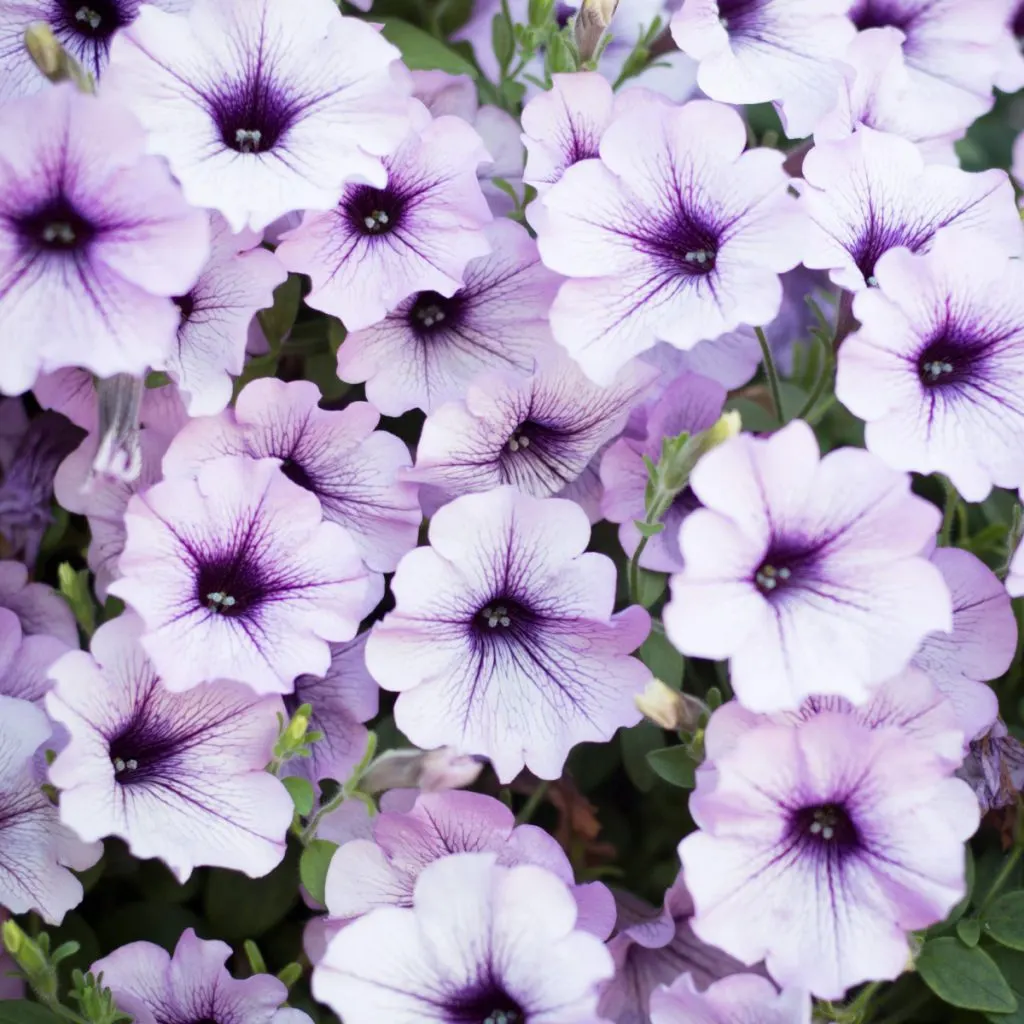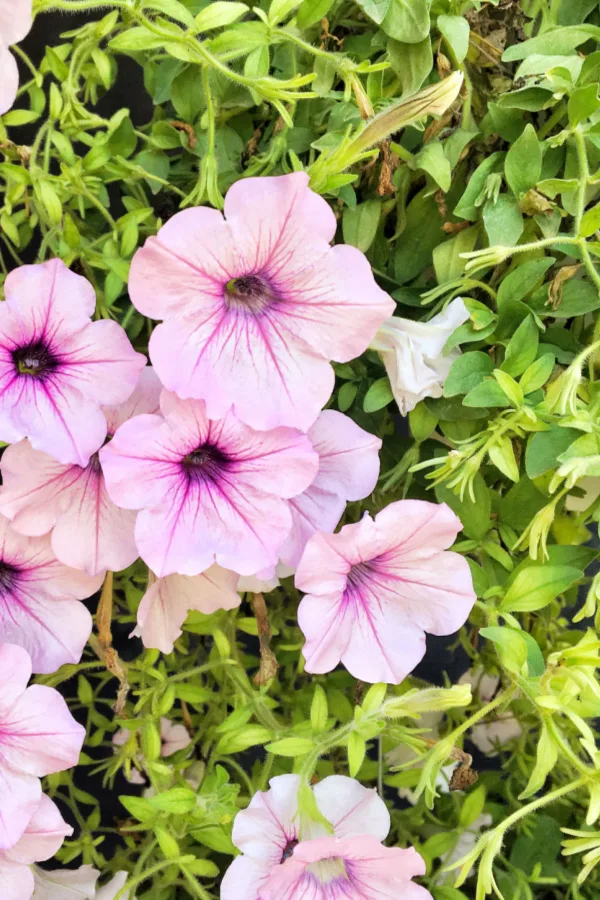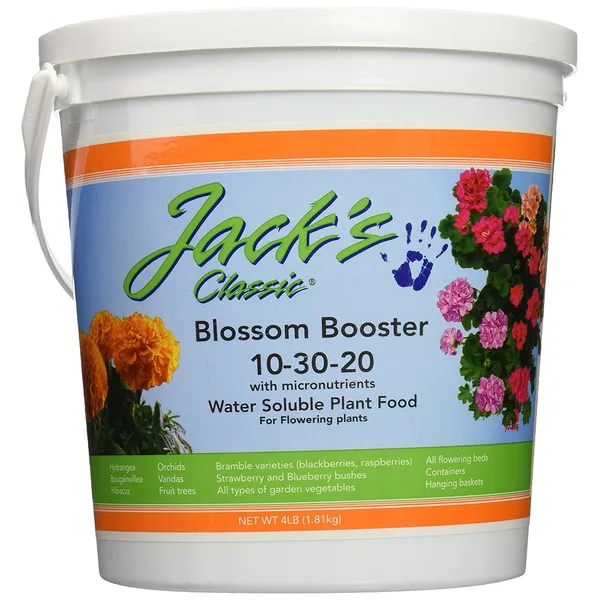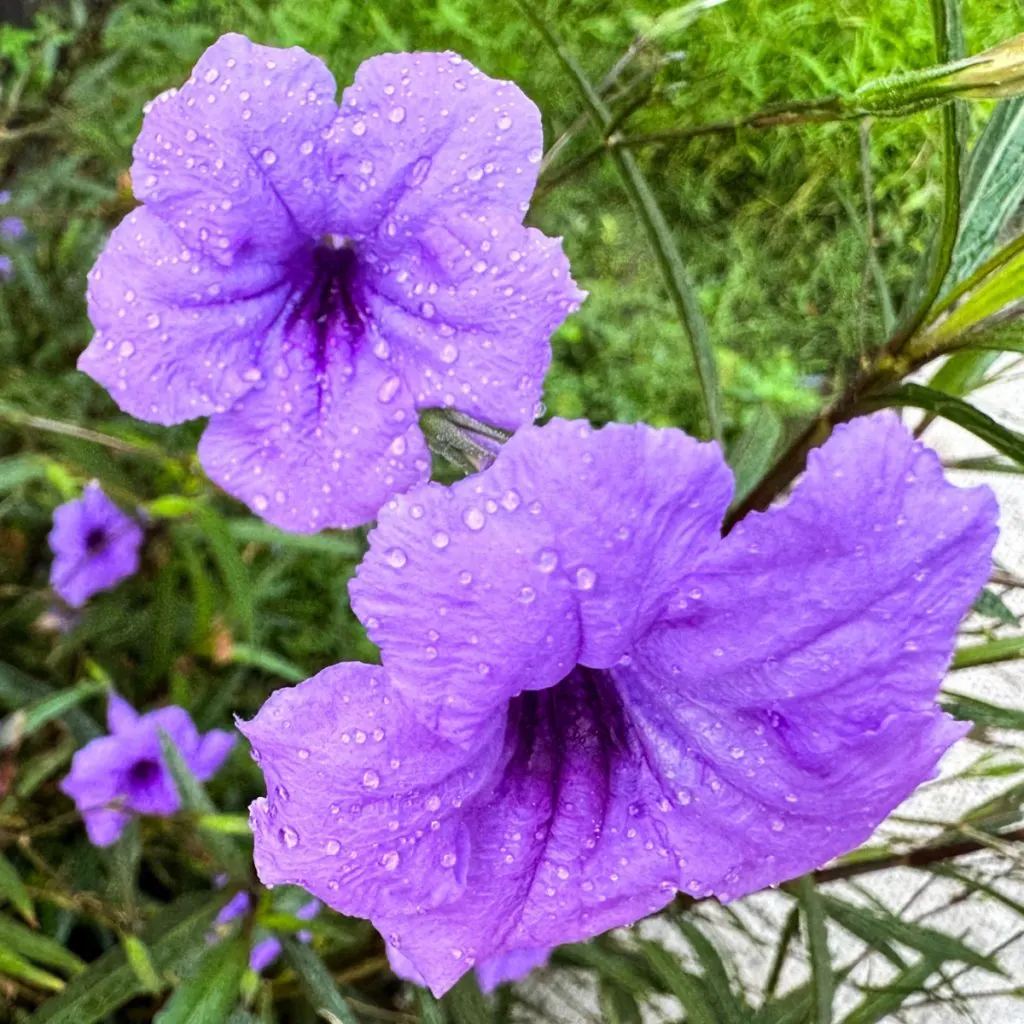One of the biggest secrets to keep wave petunias blooming big, bright and beautiful all summer long is knowing just how, when and what to fertilize these massive flowering annuals with all throughout the growing season.
Wave petunias are a hybrid offspring of the standard petunia plant. First introduced in the 1990’s, the Wave variety far surpasses the growing and flowering pattern of a traditional petunia. A standard petunia plant normally grows to around a foot in size – but Waves can more than triple that length with ease!
But what really makes this flowering annual special are its amazing flowering habits. With bright, trumpet-shaped flowers that bloom in near staggering numbers, Waves are the perfect choice for adding huge color to pots, planters and hanging baskets. They also happen to work incredibly well as a bedding plant in flowerbeds as well.

When it comes to Wave petunia care, there are really just three simple keys that can make all the difference in keeping them healthy and strong from late spring right up until fall.
The first and most important of all is feeding them the perfect diet of nutrients on a consistent basis – followed by giving them the water and sunlight they need to power strong growth and big bloom sets. Here is a look at how to provide all three to perfection – and keep your petunias blooming huge!
Fertilizing Wave Petunias – How To Keep Petunias Blooming Big
One thing is for sure – although Wave petunias can bloom big – they need a lot of energy to do so. And that is exactly why fertilizing them in just the right way and with just the right set of nutrients is the real key to keep those blooms coming on strong all season long.
Quite simply, fertilizing is a must when it comes to keeping Waves flowering late into summer and early fall. No matter how rich your potting soil or garden soil is, Wave petunias require a constant supply of nutrients to produce the massive amount of blooms and flowers that make them so spectacular.
Unfortunately, especially when it comes to container and hanging basket plants, even the best soil runs out of nutrients during the growing season. That, of course, is exactly where fertilizing can pick up the slack.

The Right Way To Fertilize Wave Petunias
To keep Wave petunias blooming strong, you should be giving them a dose of power every seven to ten days. But take notice that the key word here is lightly! Smaller but more frequent doses are better at keeping a slow and steady supply of nutrients coming to the plant.
Unfortunately, too many nutrients or the wrong set of nutrients given all at once will cause excessive growth above and below ground. That, in turn, leads to root-bound plants that will produce tons of foliage, but very few blooms. In the end, it also leads to plants that simply die off way too early in the season.
The Best Choices For Fertilizing – Fertilizing Wave Petunias
So what are the best choices when it comes to powering your Wave petunias?
For true flower power, liquid fertilizing is the best option when it comes to any annual flowering plant, including Waves. Liquid fertilizers feed plants in two unique ways – through their roots and through their foliage. This fast acting dual fertilizing is perfect when it comes to supplying the nutrients for powering blooms.
But, and this is key, the type of nutrients in that liquid fertilizer matter greatly. To power bloom sets and flowers, Wave petunias need a fertilizer heavy on phosphorous and potassium – and not nitrogen.

Nitrogen is for powering growth. It can be helpful in smaller doses to keep your petunias green and healthy. But if your petunias get too much of it, they will grow at the expense of blooms. Phosphorous and potassium, however, are the nutrients flowering annuals need to set blooms and power flowers. And the more they get of each, the more blooms your Wave petunias will produce.
Because of this, you should be feeding your plants a liquid fertilizer that has double to triple the amount of phosphorous and potassium. Affiliate Product Link: Jack’s Classic 10-30-20 Blossom Booster Water-Soluble Fertilizer with Micro nutrients
Feed Lightly But More Often – Fertilizing Wave Petunias
Feeding your Wave petunias consistently is vital to keep the flowering process going. By fertilizing every 7 to 10 days, your plants always have the nutrients they need at hand.
But in order to feed this often, you need to dilute the liquid fertilizer to half strength. This will prevent the plant from getting too many nutrients all at once. Remember that steady and slow is the recipe for long lasting flower power!
One final little fertilizing secret that can really help your petunias is to also give them a monthly dose of worm castings on top of the soil. This is especially true for Wave’s growing hanging baskets or containers. Add a half cup of worm castings to the top of the plant each month.
This will help deliver extra key trace nutrients every time you water as the power in the worm castings leach to the plant’s roots. Affiliate Link: 100% Pure Worm Castings

Water & Sunlight – Fertilizing Wave Petunias
Watering is another important part of keeping your petunias healthy and blooming. The true secret to success for watering is keeping your plants hydrated, but not saturated.
Petunias, especially those in containers and baskets, require frequent water to both survive and thrive. But the key is only watering plants when the moisture level is just beginning to fade. Too much water for a wave petunia can lead to soggy roots and a weak plant.
If your plant’s foliage begins to turn yellow, it is usually a sure sign that the plant’s roots are most likely waterlogged and you are watering too often. On the other hand, if the foliage is dry and curling, it most likely needs hydrated.
Before watering, place your finger down into the soil to a depth of at least an inch. If dirt is still sticking to your finger, then moisture is still present and watering is not needed
One of the best and easiest ways to test soil moisture is with an inexpensive soil probe. It can tell you in an instant if plants require watering at the root level. Product link : Long Probe Deep Use Soil Moisture Meter

Sunlight Matters – Fertilizing Wave Petunias
Although Wave petunias will tolerate a bit of shade, they prefer full sun. In fact, the more sun they get, the more your petunias will bloom.
For maximizing bloom potential, Wave petunias need to get at least 8 hours of full sun each day. This allows the plant to use the process of photosynthesis, turning sunlight into instant energy. The good news is that Wave petunias can handle the heat. With that in mind, they are perfect for placing in wide open areas that get bright, hot mid-day sun.
For many plants, mid-day sun can spell disaster. But with the Wave’s high tolerance for both heat and humidity, it’s a great fit. Although morning and evening sun are good too, make sure your plants are in a location where they at least receive a portion of the mid-day sunlight.
One thing you won’t have to do for your Wave petunias is deadhead them. Unlike traditional petunias, they don’t require constant deadheading or pinching back of their spent blooms to keep on producing. And they also happen to be extremely resistant to pests and disease as well!
Here is to fertilizing your Wave petunias to perfection this year – and to long lasting blooms! For more on flowering annual care, check out our article on marigolds here: How To Fertilize Marigolds – 2 Secrets To Keep Marigolds Blooming Big All Summer!
This Is My Garden
Follow Our Facebook Page For Great Gardening Tips And Advice! This Is My Garden Facebook Page
This Is My Garden is a garden website created by gardeners, for gardeners. Jim and Mary Competti have been writing gardening, DIY and recipe articles and books and speaking for over 15 years from their 46 acre Ohio farm. They publish three articles every week, 52 weeks a year. Sign up today to follow via email, or follow along!
